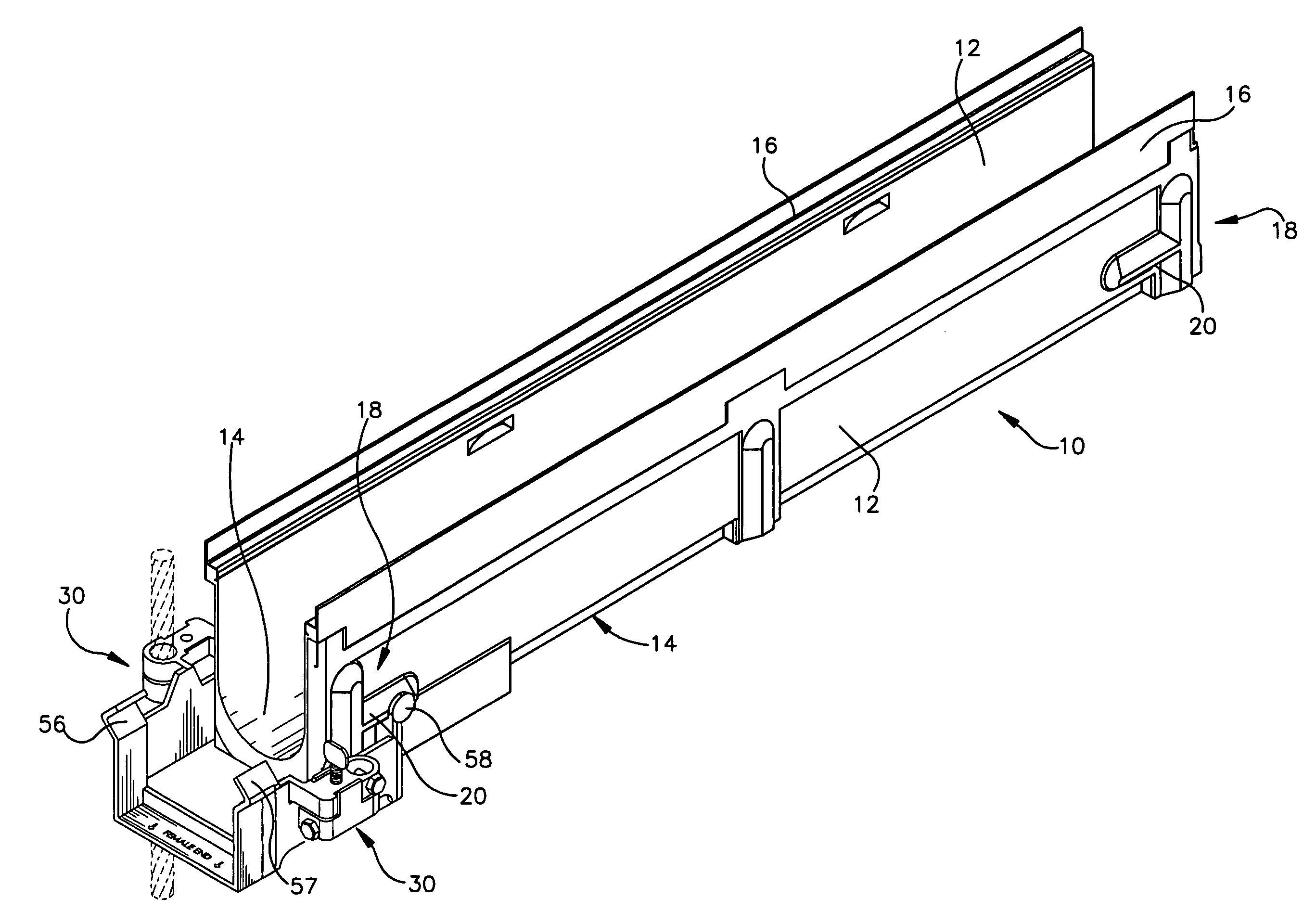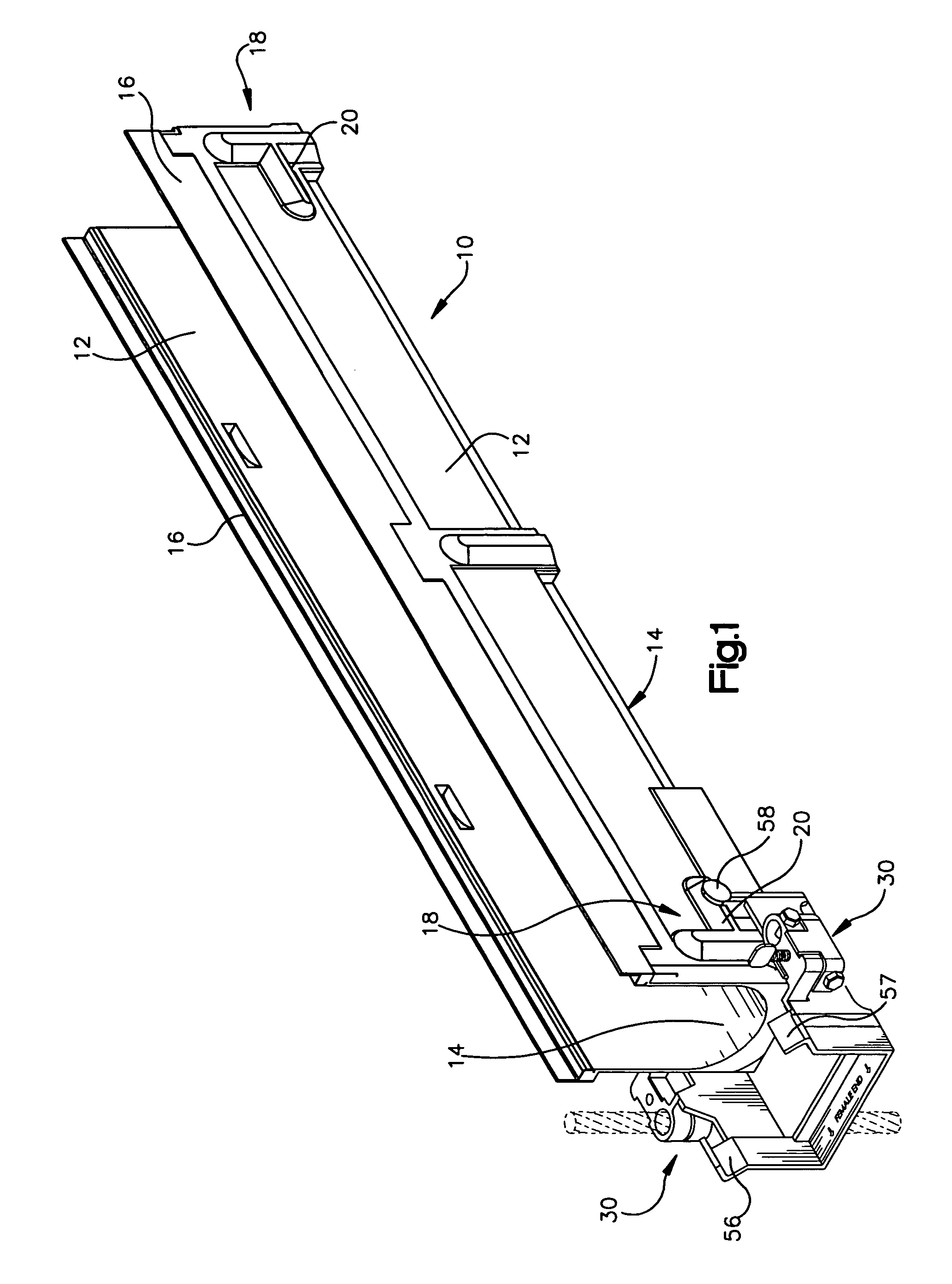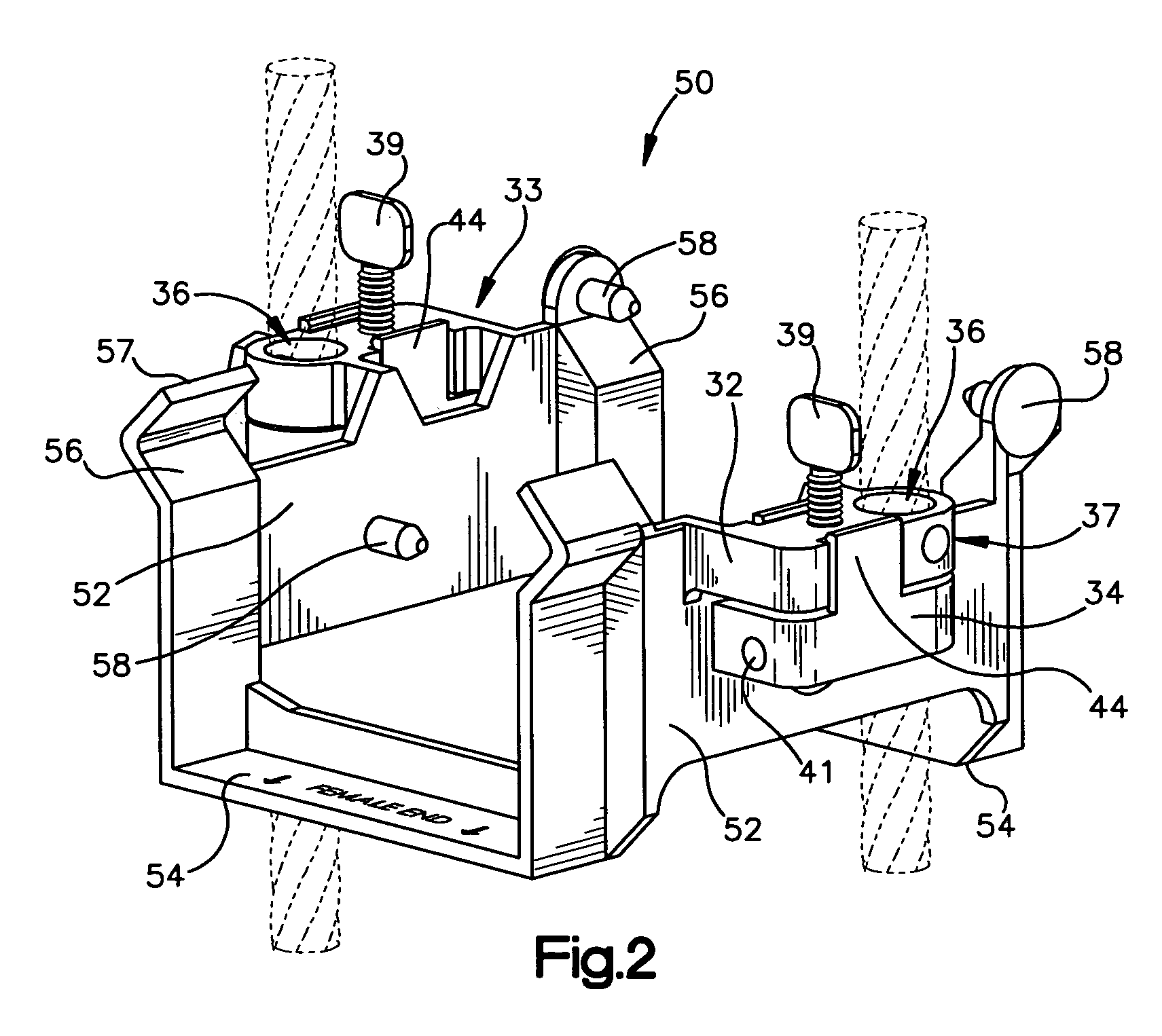Channel installation device
a technology for installing devices and drainage channels, which is applied in the direction of groynes, applications, ways, etc., can solve the problems of laborious manual adjustment of the segments on the support rods, heavy and difficult to manipulate, and more workers
- Summary
- Abstract
- Description
- Claims
- Application Information
AI Technical Summary
Benefits of technology
Problems solved by technology
Method used
Image
Examples
Embodiment Construction
[0013]The present invention provides a drainage channel installation device and method which enables the efficient and accurate installation of drainage channels within a trench. A significant advantage of the installation device of the invention is that final channel alignment can be performed quickly, easily and precisely by a single worker. Thus, in accordance with the present invention there is provided an installation device in the form of a cradle assembly for supporting at least a portion of a drainage channel section or unit in an adjustable manner on a support member such as, for example, a steel reinforcing bar or rebar. The cradle is configured to receive a portion of at least one channel segment. Although the cradle can be configured to support the channel segment anywhere along its length, in preferred embodiments it is advantageous for the cradle to be configured to receive the respective male and female ends of two adjacent channel sections. Employing a cradle assembl...
PUM
 Login to View More
Login to View More Abstract
Description
Claims
Application Information
 Login to View More
Login to View More - R&D
- Intellectual Property
- Life Sciences
- Materials
- Tech Scout
- Unparalleled Data Quality
- Higher Quality Content
- 60% Fewer Hallucinations
Browse by: Latest US Patents, China's latest patents, Technical Efficacy Thesaurus, Application Domain, Technology Topic, Popular Technical Reports.
© 2025 PatSnap. All rights reserved.Legal|Privacy policy|Modern Slavery Act Transparency Statement|Sitemap|About US| Contact US: help@patsnap.com



